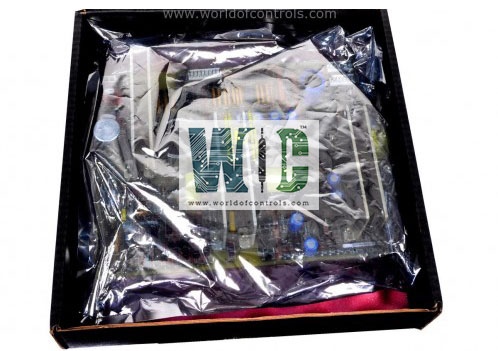
World Of Controls understands the criticality of your requirement and works towards reducing the lead time as much as possible.
IS2020SSRKG2 - Solid-State Relay Module is available in stock which ships the same day.
IS2020SSRKG2 - Solid-State Relay Module comes in UNUSED as well as REBUILT condition.
To avail our best deals for IS2020SSRKG2 - Solid-State Relay Module, contact us and we will get back to you within 24 hours.
SPECIFICATIONS:
Part Number: IS2020SSRKG2
Manufacturer: General Electric
Series: Mark VI
Number of Channels: 8
Microprocessor: Intel Celeron 650 MHz
Memory: 128 MB SDRAM
Operating system: QNX
Programming: Boolean
Input Voltage: 24 VDC
Output Power: 300W
Product Type: Solid-State Relay Module
Maximum Lead Resistance: 15 Ohms
Operating temperature: 0 to 60° C
Technology: Surface mount
Size: 16.2 cm high x 8.6 cm
Repair: 3-7 Days
Availability: In Stock
Country of Origin: United States
FUNCTIONAL DESCRIPTION:
IS2020SSRKG2 is a Solid-State Relay Module manufactured and designed by General Electric as part of the Mark VI Series used in GE Speedtronic Control Systems. A Solid-State Relay (SSR) Module is an electronic switching device that controls high-power AC or DC loads using low-power control signals without the use of mechanical contacts. When a control voltage is applied, the SSR electronically switches the load on or off through semiconductor components such as thyristors, triacs, or MOSFETs, providing fast, reliable, and maintenance-free operation.
SSR modules are commonly used in industrial automation, turbine control systems, and process control applications to drive actuators, heaters, motors, and other high-power devices. Their solid-state design eliminates contact arcing, reduces mechanical wear, and ensures long operational life, precise switching, and minimal electrical noise. Many SSR modules also include built-in protection features such as overload, short-circuit, and thermal monitoring to safeguard both the relay and connected equipment.
OPERATION:
The Solid-State Relay (SSR) operates by using a low-voltage control signal to switch a high-power load electronically. When the control input is applied, semiconductor components such as thyristors, triacs, or MOSFETs allow current to flow through the load, turning it ON without any mechanical movement. When the control signal is removed, the SSR instantly stops conduction, turning the load OFF. This contactless switching enables fast response times, silent operation, and long service life. Many SSR modules also include built-in protections like overload, short-circuit, and thermal monitoring to ensure safe and reliable operation in industrial and turbine control systems.
INSTALLATION:
The power supply is mounted in a VME rack, which must be properly grounded and installed in a location with adequate ventilation to manage heat dissipation. The module is typically designed for hot-swappable installation, allowing for easy replacement without powering down the turbine. Electrical connections must be securely made to ensure stable power delivery, and redundant power supplies can be installed to provide failover capabilities in case of a primary power supply failure. Once installed, the system should be thoroughly tested to confirm the correct operation of voltage outputs and protection systems, ensuring reliable power distribution to all critical components of the gas turbine control system.
WOC is proud to offer the largest stock of OEM Replacement parts for GE Speedtronic Gas Turbine Control Systems, ensuring you have access to the critical components you need for maintenance, upgrades, or replacements. In addition to supplying genuine parts, we specialize in repairing faulty boards and providing unused and professionally rebuilt boards, all supported by a reliable warranty to guarantee performance and peace of mind. Our team of experts is available round the clock to offer technical guidance and solutions tailored to your automation and control system requirements. Committed to maximizing uptime and operational efficiency, we are always ready to assist with any OEM needs, from parts procurement to repairs. For pricing, availability, or support, please contact our team via phone or email at WOC. Your automation challenges are our top priority, and we are dedicated to delivering fast, reliable, and expert solutions.
What is IS2020SSRKG2?
The IS2020SSRKG2 is a Solid-State Relay (SSR) module used in GE Speedtronic Turbine Control Systems. It provides electronic switching of high-power AC or DC loads without mechanical contacts, ensuring fast, reliable, and maintenance-free operation.
What is the main function of this module?
Its primary function is to control turbine actuators, auxiliary equipment, and other high-power devices within the control system. It converts low-power control signals into high-power outputs safely and efficiently.
What are the input and output specifications?
The module operates with a low-voltage DC control input (typically 5–24 VDC) and switches high-power AC or DC loads as specified by the turbine control system. Output ratings are engineered for high-current loads, maintaining efficiency and stability without mechanical wear.